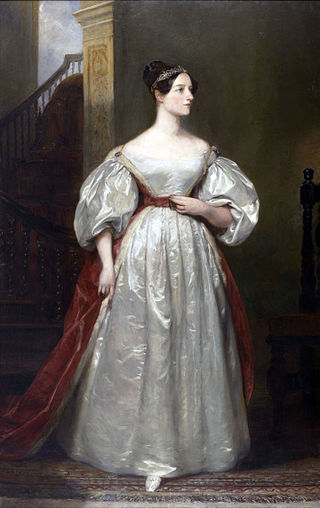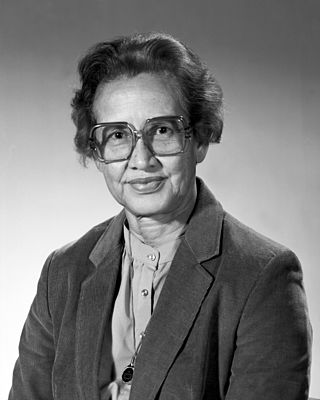Related Research Articles

Jet Propulsion Laboratory (JPL) is a federally funded research and development center in the City of Pasadena, California, United States. Founded in 1936 by Caltech researchers, the laboratory is now owned and sponsored by the National Aeronautics and Space Administration and administrated and managed by the California Institute of Technology.

Annie Jean Easley was an American computer scientist, mathematician, and rocket scientist. She worked for the Lewis Research Center of the National Aeronautics and Space Administration (NASA) and its predecessor, the National Advisory Committee for Aeronautics (NACA). She was a leading member of the team which developed software for the Centaur rocket stage, and was one of the first African-Americans to work at NASA. Easley was posthumously inducted into the Glenn Research Hall of Fame in 2015. On February 1, 2021, a crater on the Moon was named after Easley by the IAU.

Women in computing were among the first programmers in the early 20th century, and contributed substantially to the industry. As technology and practices altered, the role of women as programmers has changed, and the recorded history of the field has downplayed their achievements.

The term "computer", in use from the early 17th century, meant "one who computes": a person performing mathematical calculations, before electronic computers became commercially available. Alan Turing described the "human computer" as someone who is "supposed to be following fixed rules; he has no authority to deviate from them in any detail." Teams of people, often women from the late nineteenth century onwards, were used to undertake long and often tedious calculations; the work was divided so that this could be done in parallel. The same calculations were frequently performed independently by separate teams to check the correctness of the results.

Claudia Joan Alexander was a Canadian-born American research scientist specializing in geophysics and planetary science. She worked for the United States Geological Survey and NASA's Jet Propulsion Laboratory. She was the last project manager of NASA's Galileo mission to Jupiter and until the time of her death had served as project manager and scientist of NASA's role in the European-led Rosetta mission to study Comet Churyumov–Gerasimenko.

Katherine Johnson was an American mathematician whose calculations of orbital mechanics as a NASA employee were critical to the success of the first and subsequent U.S. crewed spaceflights. During her 33-year career at NASA and its predecessor, she earned a reputation for mastering complex manual calculations and helped pioneer the use of computers to perform the tasks. The space agency noted her "historical role as one of the first African-American women to work as a NASA scientist".
Mary Sherman Morgan was a U.S. rocket fuel scientist credited with the invention of the liquid fuel Hydyne in 1957, which powered the Jupiter-C rocket that boosted the United States' first satellite, Explorer 1.

Christine Darden is an American mathematician, data analyst, and aeronautical engineer who devoted much of her 40-year career in aerodynamics at NASA to researching supersonic flight and sonic booms. She had an M.S. in mathematics and had been teaching at Virginia State University before starting to work at the Langley Research Center in 1967. She earned a Ph.D. in engineering at George Washington University in 1983 and has published numerous articles in her field. She was the first African-American woman at NASA's Langley Research Center to be promoted to the Senior Executive Service, the top rank in the federal civil service.

This is a timeline of women in computing. It covers the time when women worked as "human computers" and then as programmers of physical computers. Eventually, women programmers went on to write software, develop Internet technologies and other types of programming. Women have also been involved in computer science, various related types of engineering and computer hardware.
The West Computers were the African American, female mathematicians who worked as human computers at the Langley Research Center of NACA from 1943 through 1958. These women were a subset of the hundreds of female mathematicians who began careers in aeronautical research during World War II. To offset the loss of manpower as men joined the war effort, many U.S. organizations began hiring, and actively recruiting, more women and minorities during the 1940s. In 1935, the Langley Research Center had five female human computers on staff. By 1946, the Langley Research Center had recruited about 400 female human computers.

Dorothy Jean Johnson Vaughan was an American mathematician and human computer who worked for the National Advisory Committee for Aeronautics (NACA), and NASA, at Langley Research Center in Hampton, Virginia. In 1949, she became acting supervisor of the West Area Computers, the first African-American woman to receive a promotion and supervise a group of staff at the center.

Susan G. Finley, a native Californian, has been an employee of NASA's Jet Propulsion Laboratory (JPL) since January 1958, making her the longest-serving woman in NASA. Two days before Explorer 1 was launched, Finley began her career with the laboratory as a human computer, calculating rocket launch trajectories by hand. She now serves as a subsystem engineer for NASA's Deep Space Network (DSN). At JPL, she has participated in the exploration of the Moon, the Sun, all the planets, and other bodies in the Solar System.

Hidden Figures is a 2016 American biographical drama film directed by Theodore Melfi and written by Melfi and Allison Schroeder. It is loosely based on the 2016 non-fiction book of the same name by Margot Lee Shetterly about three female African-American mathematicians: Katherine Goble Johnson, Dorothy Vaughan, and Mary Jackson, who worked at NASA during the Space Race. Other stars include Kevin Costner, Kirsten Dunst, Jim Parsons, Mahershala Ali, Aldis Hodge, and Glen Powell.

Nathalia Holt, Ph.D. is a journalist and an American author of non-fiction. Her works include Cured, Rise of the Rocket Girls,The Queens of Animation and Wise Gals.

Mary Jackson was an American mathematician and aerospace engineer at the National Advisory Committee for Aeronautics (NACA), which in 1958 was succeeded by the National Aeronautics and Space Administration (NASA). She worked at Langley Research Center in Hampton, Virginia, for most of her career. She started as a computer at the segregated West Area Computing division in 1951. In 1958, after taking engineering classes, she became NASA's first black female engineer.

Barbara Jean Paulson was an American human computer at NASA's Jet Propulsion Laboratory (JPL) and one of the first female scientists employed there. Paulson began working as a mathematician at JPL in 1948, where she calculated rocket trajectories by hand. She is among the women who made early progress at JPL.

Janez Yvonne Lawson Bordeaux was an American chemical engineer who became one of NASA's computers. She was the first African-American hired into a technical position at Jet Propulsion Laboratory. She programmed the IBM 701.

Helen Ling is a former software engineer who worked at NASA's Jet Propulsion Laboratory (JPL). She made considerable efforts to make JPL more diverse.
Barbara Canright was an American human computer at NASA's Jet Propulsion Laboratory (JPL) who was the first female mathematician to be employed. Canright joined the team in 1939 as a human computer, which required "Teams of people who were frequently used to undertake long and often tedious calculations; the work was divided so that this could be done in parallel." During her time at the JPL program she was instrumental in calculating both the thrust-to-weight ratio for performance of engines under various conditions, and the potential of rocket propellant. Canright was critical in the development of the JPL program and laid the foundations for other women to work in a field which was previously closed off to them.

The "Rocket Girls" were the women that worked at NASA and the Jet Propulsion Laboratory (JPL) before the development of desktop computers. These women are mostly unknown, but they did the majority of all hand calculations for missions. Most of these women were given the nickname of "computers" due to their abilities in the fields of physics and mathematics.
References
- 1 2 "The Secret History of the Women Who Got Us Beyond the Moon". National Geographic News. 2016-05-08. Retrieved 2019-04-15.
- ↑ Popova, Maria (2016-04-15). "The Rise of Rocket Girls: The Untold Story of the Remarkable Women Who Powered Space Exploration". Brain Pickings. Retrieved 2019-04-15.
- 1 2 "Ladies Who Launch". Science History Institute. 2017-08-14. Retrieved 2019-04-15.
- ↑ "Women Made Early Inroads at JPL". NASA/JPL. Retrieved 2019-04-15.